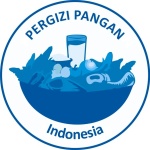ANALISIS EFISIENSI PENGGUNAAN INPUT PADA USAHATANI CAISIM (Brassica chinensis var. parachinensis) DI KECAMATAN LINGSAR KABUPATEN LOMBOK BARAT
Abstract
This study aims to: (1) analyze the income of caisim farming in Lingsar District West Lombok Regency; (2) analyzing the efficiency of input use in caisim farming in Lingsar District West Lombok Regency; (3) knowing the supporting and inhibiting factors in caisim farming in Lingsar District West Lombok Regency.
The analysis used in this research are: income analysis, Cobb-Douglas function analysis, and descriptive analysis. The results showed that: (1) The average income of caisim farming in Lingsar District was IDR 1,929,875.83/LLG or IDR 112,202.08/are; (2) Of the eight types of inputs used in caisim farming, inputs of land area, seeds, manure, ponska fertilizer and labor have not been efficient. Meanwhile, the use of urea, Gandasil-D, and pesticide inputs is inefficient; (3) The supporting factors for caisim farming in Lingsar District are: (a) technical aspects (availability of production facilities and land potential); (b) economic aspect (marketing); (c) institutional aspects (the existence of institutions providing capital), while the inhibiting factors include (a) technical aspects (pest attacks); (b) economic aspects (uncertain output selling prices and increasingly expensive fertilizer prices); (c) institutional aspects (farmers' activity when they are given counseling). Based on the results of the research, some suggestions can be made as follows: (1) Caisim farmers, especially in Lingsar District, West Lombok Regency are expected to follow cultivation techniques as recommended, especially the use of seeds, fertilizers and pesticides so that they can further increase land productivity, production of caisim and income; (2) It is expected that caisim farmers will be more active in extension activities held by local PPL so that respondent farmers in Lingsar District can increase their knowledge, especially in caisim vegetable cultivation.

This work is licensed under a Creative Commons Attribution 4.0 International License.






